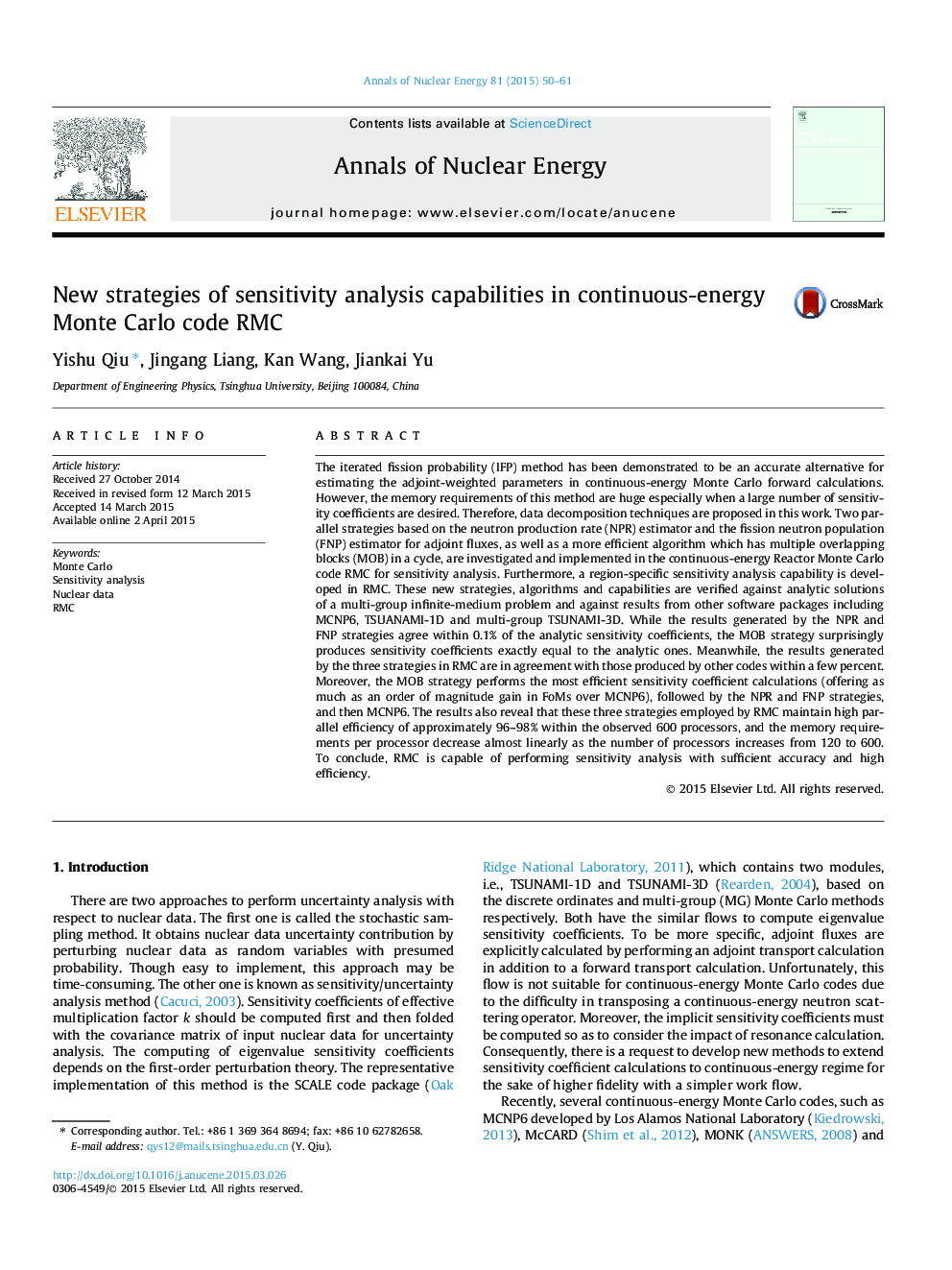| کد مقاله | کد نشریه | سال انتشار | مقاله انگلیسی | نسخه تمام متن |
|---|---|---|---|---|
| 8068639 | 1521117 | 2015 | 12 صفحه PDF | دانلود رایگان |
عنوان انگلیسی مقاله ISI
New strategies of sensitivity analysis capabilities in continuous-energy Monte Carlo code RMC
دانلود مقاله + سفارش ترجمه
دانلود مقاله ISI انگلیسی
رایگان برای ایرانیان
کلمات کلیدی
موضوعات مرتبط
مهندسی و علوم پایه
مهندسی انرژی
مهندسی انرژی و فناوری های برق
پیش نمایش صفحه اول مقاله

چکیده انگلیسی
The iterated fission probability (IFP) method has been demonstrated to be an accurate alternative for estimating the adjoint-weighted parameters in continuous-energy Monte Carlo forward calculations. However, the memory requirements of this method are huge especially when a large number of sensitivity coefficients are desired. Therefore, data decomposition techniques are proposed in this work. Two parallel strategies based on the neutron production rate (NPR) estimator and the fission neutron population (FNP) estimator for adjoint fluxes, as well as a more efficient algorithm which has multiple overlapping blocks (MOB) in a cycle, are investigated and implemented in the continuous-energy Reactor Monte Carlo code RMC for sensitivity analysis. Furthermore, a region-specific sensitivity analysis capability is developed in RMC. These new strategies, algorithms and capabilities are verified against analytic solutions of a multi-group infinite-medium problem and against results from other software packages including MCNP6, TSUANAMI-1D and multi-group TSUNAMI-3D. While the results generated by the NPR and FNP strategies agree within 0.1% of the analytic sensitivity coefficients, the MOB strategy surprisingly produces sensitivity coefficients exactly equal to the analytic ones. Meanwhile, the results generated by the three strategies in RMC are in agreement with those produced by other codes within a few percent. Moreover, the MOB strategy performs the most efficient sensitivity coefficient calculations (offering as much as an order of magnitude gain in FoMs over MCNP6), followed by the NPR and FNP strategies, and then MCNP6. The results also reveal that these three strategies employed by RMC maintain high parallel efficiency of approximately 96-98% within the observed 600 processors, and the memory requirements per processor decrease almost linearly as the number of processors increases from 120 to 600. To conclude, RMC is capable of performing sensitivity analysis with sufficient accuracy and high efficiency.
ناشر
Database: Elsevier - ScienceDirect (ساینس دایرکت)
Journal: Annals of Nuclear Energy - Volume 81, July 2015, Pages 50-61
Journal: Annals of Nuclear Energy - Volume 81, July 2015, Pages 50-61
نویسندگان
Yishu Qiu, Jingang Liang, Kan Wang, Jiankai Yu,